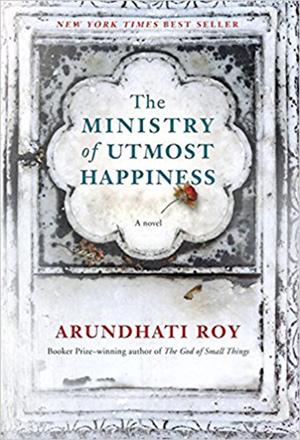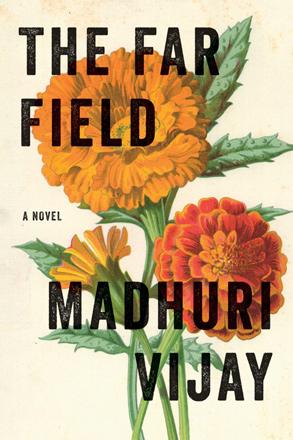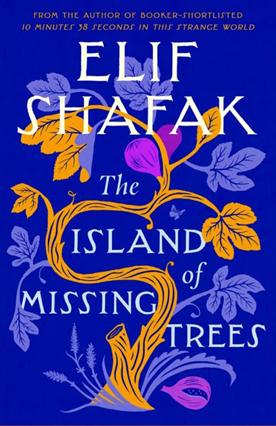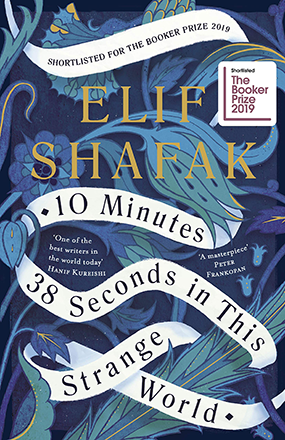You are here
Shelter for the damaged, dispossessed
By Sally Bland - Apr 15,2018 - Last updated at Apr 15,2018

The Ministry of Utmost Happiness
Arundhati Roy
UK: Hamish Hamilton, 2017
Pp 445
“The Ministry of Utmost Happiness” is astonishing and, at times, overwhelming in its imagery, which ranges from details of delicate beauty to the ugly, horrific and macabre. Stories within stories accumulate, conveying themes of love and its opposite — human cruelty. The novel is both a warning of impending doom — what happens to people and societies distorted by hate and war, and a reassurance that love can heal the shattered victims if allowed to blossom freely on its own terms.
This is Indian writer and activist Arundhati Roy’s first novel after her much acclaimed “The God of Small Things”, which won the Booker Prize in 1997. In between, she has written a number of non-fiction books about human rights, environmental issues and social justice, as well as elegantly scathing critiques of war and empire. These same themes are woven into the narrative of “The Ministry of Utmost Happiness” and explored via the interaction among a set of larger-than-life characters.
The plot is so complex and rambling as to defy summary, but it is anchored in the lives of two unique women. Anjum is a hermaphrodite who chooses to be a woman and leaves her parental home to live with others like herself, called hijras, in the Old City of Delhi. Here, another resident tells her that hijras cannot be happy because all the outside world’s conflicts are raging inside them, whether “price-rise, children’s school-admissions, husbands’ beatings, wives’ cheating, Hindu-Muslim riots, Indo-Pak war…” (p. 23). It is apparent that Anjum’s precarious status is symbolic of all outsiders or misfits, and her search for belonging and happiness is the search of them all.
Challenging this dire outlook, Anjum adopts an abandoned child upon whom she showers all her love: “In order to please Zainab, Anjum began to write a simpler, happier life for herself. The rewriting in turn began to make Anjum a simpler, happier person,” (p. 34). But after she witnesses a particularly gruesome outbreak of communal violence, her happiness fades and she goes to live in a graveyard.
Tilo, the other main female character, does not seem to be a misfit, but her self-sufficiency, creativity and critical outlook distance her from conventional life. The three men who love her involve her in the Kashmir war in all its shocking brutality of counterinsurgency, massacres, incarceration and torture.
The evils of war are dissected from many angles: The ambiguity of heroism, its dehumanising effect on both sides, the dilemmas facing the freedom fighters. As one Kashmiri freedom fighter says in a statement that might resonate with many Palestinians, “This is the worst part of the occupation… what it makes us do to ourselves. This reduction, this standardisation, this stupidification…” (p. 371)
As the war drags on, its effects boomerang back to Indian society and lead to a hardening of attitudes on the Kashmiri side. A new type of militant emerges under Afghani and Pakistani influence, whereby attaining freedom is equated with a strict interpretation of Islam. “There would be no debate… all arguments would be settled by bullets. Shiites were not Muslim. And women would have to learn to dress appropriately… The Strict Line plunged the Valley into a dilemma. People knew that the freedom they longed for would not come without a war, and they knew the Strict Ones were by far the better warriors” — a trajectory reminiscent of what happened in Syria. (p. 321)
Last but not least is the profit motive: “Everyone on all sides is making money on the bodies of young Kashmiris.” (p. 228)
While the war rages in Kashmir, “in Delhi there was no war other than the usual one — the war of the rich against the poor” (p. 392). With her startling imagery and passionate storytelling, Roy paints vivid scenes of urban poverty and decay, pollution, rampant consumerism and communal violence, most often perpetrated by Hindu ultra-nationalists against Muslims and untouchables. The dark underside of modernity is revealed as neo-liberalism reshapes the country: “Away from the lights and advertisements, villages were being emptied. Cities too. Millions of people were being moved, but nobody knew where to… surplus people were banned” and their slum dwellings bulldozed. (p. 98)
Roy’s pen is extremely versatile as she records these travesties. She relentlessly lampoons the pretensions, indifference and prejudices of the rich and powerful with sly irony and satirical humour; her outrage at the torturers of the intelligence service is undisguised. The tone of the novel changes rapidly according to events, switching from starkly realistic, to mythical, dream-like or nightmarish, and her style shifts according to point-of-view.
On the other hand, she writes with deep compassion about how human beings are shattered by war, death and poverty. The novel is also about people’s capacity to bear pain and death, to live with horrors they wish they did not know about, to survive and even start life anew, often by creating new families based on love, but not necessarily on blood ties. It is both an indictment of violence and a plea to accept “the other”, whether another nationality, religion, class/caste or life style.
In conclusion, there really is a Ministry of Utmost Happiness but it has nothing in common with a governmental institution. “The Ministry of Utmost Happiness” is available at Readers.
Related Articles
The Far FieldMadhuri VijayNew York: Grove Press, 2019Pp.
The Island of Missing TreesElif ShafakUK: Viking/Penguin Random House, 2021Pp.
10 Minutes 38 Seconds in This Strange WorldElif ShafakLondon: Viking/Penguin Random House: 2019Pp.

















